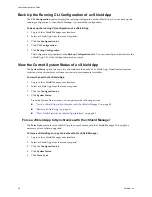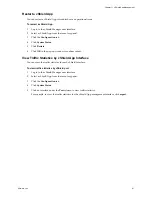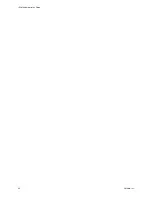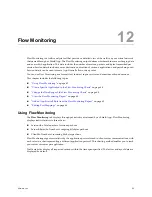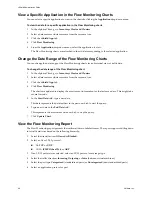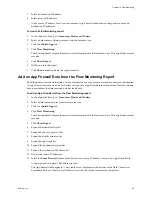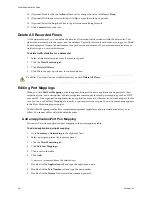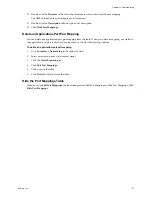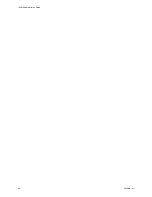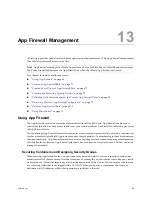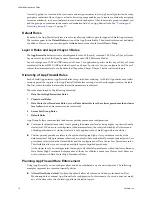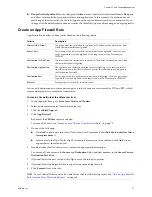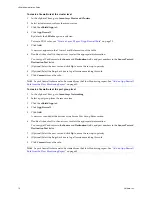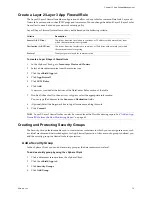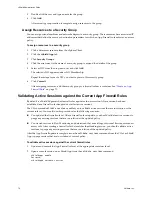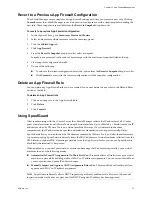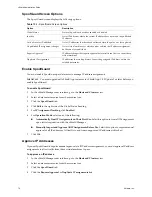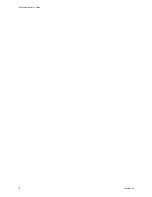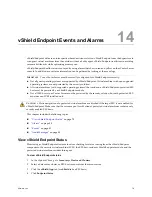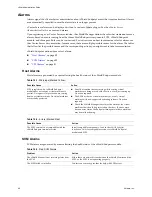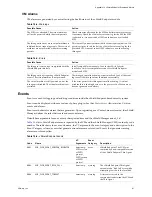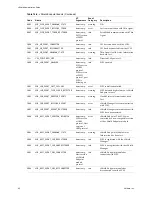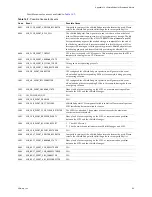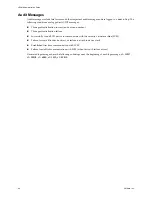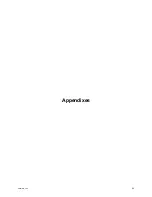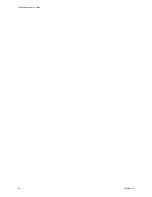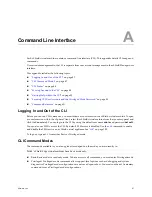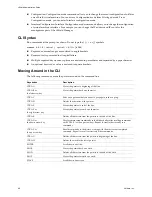
VMware, Inc.
73
Chapter 13 App Firewall Management
Create a Layer 2/Layer 3 App Firewall Rule
The Layer 2/Layer 3 firewall enables configuration of allow or deny rules for common Data Link Layer and
Network Layer requests, such as ICMP pings and traceroutes. You can change the default Layer 2/Layer 3 rules
from allow to deny based on your network security policy.
Layer 2/Layer 3 firewall rules allow or deny traffic based on the following criteria:
To create a Layer 2/Layer 3 firewall rule
1
In the vSphere Client, go to
Inventory > Hosts and Clusters
.
2
Select a datacenter resource from the resource tree.
3
Click the
vShield App
tab.
4
Click
App Firewall
.
5
Click
L2/L3 Rules
.
6
Click
Add
.
A new row is added at the bottom of the DataCenter Rules section of the table.
7
Double-click each cell in the new row to type or select the appropriate information.
You can type IP addresses in the
Source
and
Destination
fields
8
(Optional) Select the
Log
check box to log all sessions matching this rule.
9
Click
Commit
.
Creating and Protecting Security Groups
The Security Groups feature enables you to create custom containers to which you can assign resources, such
as virtual machines and network adapters, for App Firewall protection. After a security group is defined, you
add the security group to a firewall rule for protection.
Add a Security Group
In the vSphere Client, you can add a security group at the datacenter resource level.
To add a security group by using the vSphere Client
1
Click a datacenter resource from the vSphere Client.
2
Click the
vShield App
tab.
3
Click
Security Groups
.
4
Click
Add Group
.
Criteria
Description
Source (A.B.C.D/nn)
Container, direction in relation to container, or IP address with netmask (nn) from
which the communication originated
Destination (A.B.C.D/nn)
Container, direction in relation to container, or IP address with netmask (nn) which
the communication is targeting
Protocol
Transport protocol used for communication
N
OTE
Layer 2/Layer 3 firewall rules can also be created from the Flow Monitoring report. See
“Add an App
Firewall Rule from the Flow Monitoring Report”
on page 65.
Summary of Contents for VSHIELD APP 1.0.0 UPDATE 1 - API
Page 9: ...VMware Inc 9 vShield Manager and vShield Zones...
Page 10: ...vShield Administration Guide 10 VMware Inc...
Page 14: ...vShield Administration Guide 14 VMware Inc...
Page 18: ...vShield Administration Guide 18 VMware Inc...
Page 24: ...vShield Administration Guide 24 VMware Inc...
Page 34: ...vShield Administration Guide 34 VMware Inc...
Page 42: ...vShield Administration Guide 42 VMware Inc...
Page 46: ...vShield Administration Guide 46 VMware Inc...
Page 47: ...VMware Inc 47 vShield Edge and Port Group Isolation...
Page 48: ...vShield Administration Guide 48 VMware Inc...
Page 57: ...VMware Inc 57 vShield App and vShield Endpoint...
Page 58: ...vShield Administration Guide 58 VMware Inc...
Page 62: ...vShield Administration Guide 62 VMware Inc...
Page 68: ...vShield Administration Guide 68 VMware Inc...
Page 78: ...vShield Administration Guide 78 VMware Inc...
Page 85: ...VMware Inc 85 Appendixes...
Page 86: ...vShield Administration Guide 86 VMware Inc...


